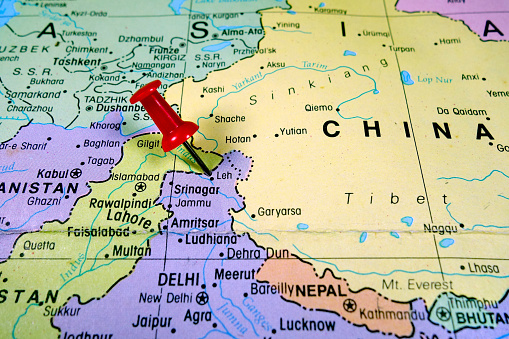How abrogation of Article 370 was criticised all around the World?
- Due process
- The process of revocation of Article 370, which ties the state with India, needed the approval of J&K’s Constituent Assembly. In the absence of such an assembly, it can be removed with the concurrence of the state legislative assembly. But the assembly does not exist at the moment either, and the notification suggests that it was the Governor’s concurrence that was obtained to render the provisions irrelevant. This is clearly not sufficient.
- The process has been pushed through without consultations with Kashmir’s political leaders, who have been under detention.
- Further, the reorganisation of states requires the consent of the state assembly concerned.
- In this case, J&K has been bifurcated, and statehood diluted to UT status, without any deliberations in the assembly.
Article 3 of the Constitution
- It says that before parliament can consider a bill that diminishes the area of a state or changes its name, the bill must be “referred by the President to the Legislature of that State for expressing its views thereon”.
- This is an essential safeguard of India’s federal system and has clearly not been followed in this case.
- In Parliament, the Home Minister invoked that since the J&K assembly was dissolved and the state is under Central rule, it is parliament that gets to exercise the prerogatives of the assembly.
- This move will strain India’s social fabric not only in its impact on Jammu and Kashmir but also in the portents it holds for federalism, parliamentary democracy and diversity.
- The Centre’s abrupt move disenfranchised people on a matter that directly affects their life and sentiments.
Kashmiris seek greater democracy
- Like all Indian citizens, Kashmiris seek greater democracy.
- Elements keen to destabilize India would seek to build a narrative that Delhi is taking away powers from the local level. It is important that the process of turning the state into a UT does not lead to alienation.
Deepen communal and religious lines
- While Ladakhi Buddhists, for instance, are now celebrating the fulfilment of their long-pending demand for Union Territory status, the voices of Kargilis who are still under a strict curfew are yet to be heard.
- They may not support this decision because ‘a Union Territory without a legislature’ not only negates the idea of decentralisation of power to the grassroots (the undergirding principle of the autonomous hill council) but could well lead to a shifting of the loci of power to Leh, resulting in losing whatever gains they have assiduously made over the years.
Instrument of Accession
- In Kashmir’s Instrument of Accession in Clause 5, Raja Hari Singh, ruler of J&K, explicitly mentioned that the terms of “my Instrument of Accession cannot be varied by any amendment of the Act or of Indian Independence Act unless such amendment is accepted by me by an Instrument supplementary to this Instrument”.
- Clause 7 said “nothing in this Instrument shall be deemed to commit me in any way to acceptance of any future constitution of India or to fetter my discretion to enter into arrangements with the Government of India under any such future constitution”.
- Originally it was India’s stated policy that wherever there was a dispute on accession, it should be settled in accordance with the wishes of the people rather than a unilateral decision of the ruler of the princely state.
- In India’s acceptance of the IoA, Lord Mountbatten stated that “it is my Government’s wish that as soon as law and order have been restored in Kashmir and her soil is cleared of the invader, the question of the State’s accession be settled by a reference to the people”.
Elections in Jammu and Kashmir were delayed
- The three independent observers appointed by the Election Commission — to assess the readiness for assembly elections in Jammu & Kashmir — are learnt to have conveyed to the poll panel that the situation is conducive for elections immediately after Lok Sabha polls.
- Former MP Karan Singh, son of Maharaja Hari Singh, wrote in An Examined Life: “The right-wing seems to resent that J&K carries a special status. That has always surprised me. We are a great country, we should be large-hearted. J&K came to India under complex and difficult circumstances. Now after all these years to ask why it holds a special position is baffling. It will always be special because it was born out of a special historical event and subsequent political developments. In England they have all sorts of governing systems…, we should feel so lucky that J&K, a Muslim-majority state became a part of India despite the religion-led Partition. Cherish that; relish that; honour that.”
- In November 1963, in a debate in Parliament, when Hari Vishnu Kamath argued that Kashmir was “not fully” integrated, Nehru asserted that it was, indeed, “fully integrated” with India. He said: “The House will remember that we have some restrictions with respect to NEFA and other places; outsiders cannot buy land. This is also in some other districts, the hill districts of Assam. This is to protect them.”
- Looking at these arguments from the past, the people, the local political parties in Jammu and Kashmir and the political parties in India should have been taken into confidence for bringing about an end to legislation that was indeed the bridge between India and the state of Jammu and Kashmir.





